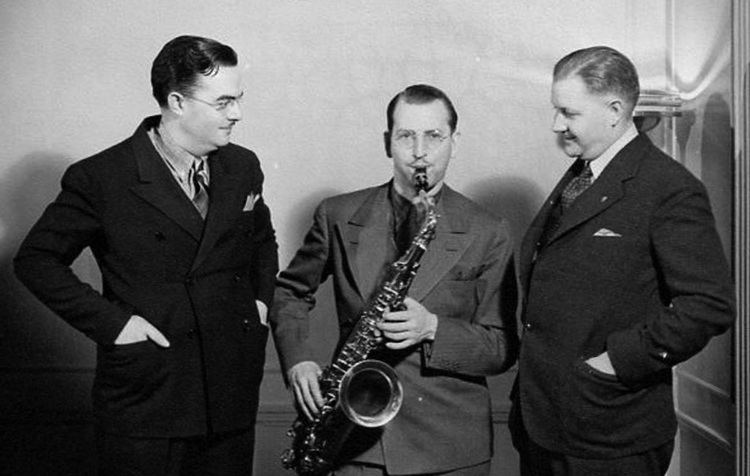Name Larry Teal | Died 1984 | |
 | ||
Books The Art of Saxophone Playing Similar People Donald Sinta, Sigurd Rascher, Eugene Rousseau, Marcel Mule, Bernhard Heiden | ||
vlog42 larry teal daily studies for saxophone
Larry Teal (26 March 1905 - 11 July 1984) is considered by many to be the father of American orchestral saxophone.
Contents
- vlog42 larry teal daily studies for saxophone
- Solos for young saxophonist the swan saint saens
- Career
- References
Solos for young saxophonist the swan saint saens
Career
Laurence Lyon (Larry) Teal earned a bachelor's degree in pre-dentistry from the University of Michigan. Although he came to the University of Michigan to study dentistry, he soon became involved with Wilson's Wolverines—a jazz band with a more than local following. He toured Europe with them for several years and later returned to the States only to be recruited by Glen Gray's Casa Loma Orchestra of Toronto, one of the important society orchestras of the period. He later earned a Doctor of Music from the Detroit Institute of Musical Arts in 1943.
Teal carved out his own niche in Detroit's musical life. He was a member of radio station WJR's live studio orchestra and he was a member of the Detroit Symphony Orchestra (DSO) from 1943 to 1964. Not only did he play sax, as one might expect, but he also performed on clarinet and was the DSO's first desk flutist, a rare enough feat then and almost unheard of now. Additionally, he opened his own music studio and staffed it with players from the orchestra. It was one of the most reputable, demanding and prestigious of its kind in the country. His studio near Wayne University where many high school and collegiate students studied saxophone. Don Sinta was one of those students who was considered a virtuoso in saxophone by many while he was a music major at Wayne. Mr. Teal was highly sought after as a professional musician by both classical and popular musical organizations.
He became the first full-time professor of saxophone at any American university when he was appointed to the faculty of the University of Michigan-Ann Arbor in 1953. He remained the professor of saxophone there until he retired in 1974, at which time he was given the title "professor emeritus."
During his 21 years at the university, Teal taught over 100 college saxophone students, many of whom went on to become successful teachers and performers. In this way he had an unusual degree of influence over the direction and quality of classical saxophone teaching in America. Teal was not only a significant figure in the musical life of Michigan in this century but the single most important figure in having the sax become accepted as a "legitimate" instrument.
His students included:
Teal wrote several books for use by saxophone students and teachers, including:
